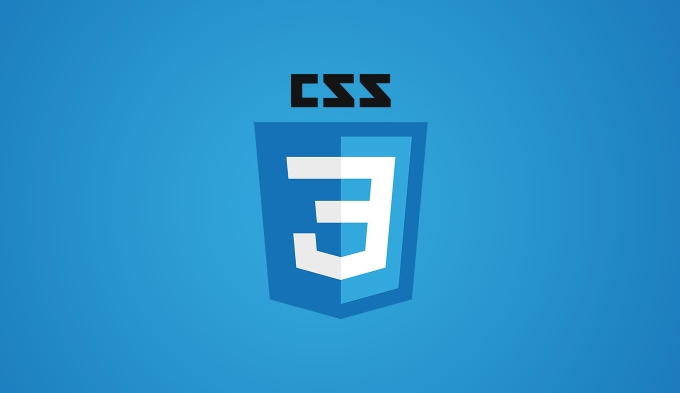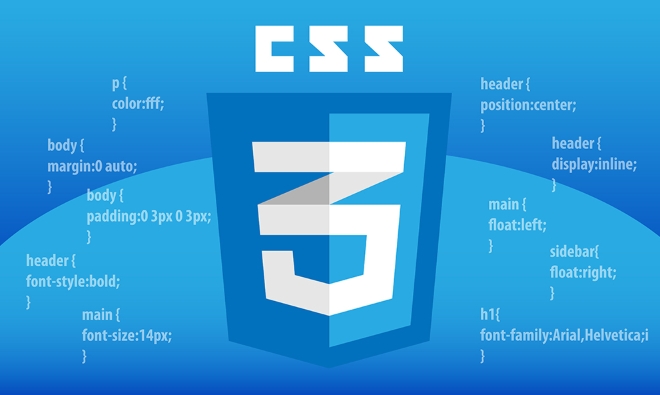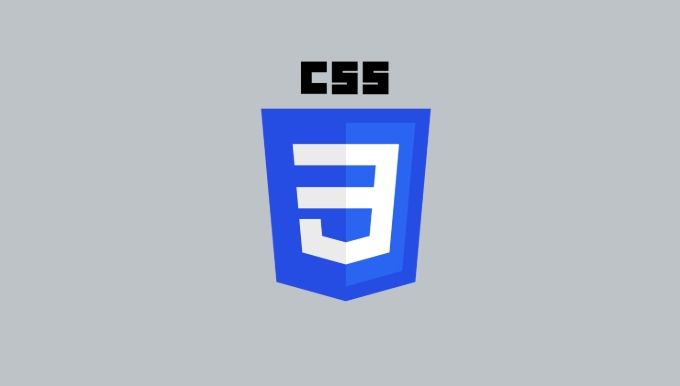 Web Front-end
Web Front-end
 CSS Tutorial
CSS Tutorial
 What is the difference between `initial`, `inherit`, `unset`, and `revert` keywords?
What is the difference between `initial`, `inherit`, `unset`, and `revert` keywords?
What is the difference between `initial`, `inherit`, `unset`, and `revert` keywords?
Jul 22, 2025 am 01:16 AMinitial resets the attribute to the default value defined by the CSS specification, such as margin: initial reset to 0; inherit makes the attribute inherit the calculated value of the parent element, such as color: inherit lets the child element inherit the parent color; unset intelligently chooses inheritance or reset based on whether the attribute is inherited by default, such as color: unset may inherit the parent while border: unset is reset; revert falls back to the browser's default style, such as background-color: revert restores the default white background. These keywords are used for style control and reset in different scenarios.

When working with CSS, you'll sometimes want to control how property values behave in relation to their parent elements or the browser's defaults. That's where special keywords like initial , inherit , unset , and revert come in. They let you explicitly define how a CSS property should get its value. But what exactly do they each mean, and when should you use them? Let's break it down.

What does initial do?
The initial keyword sets a property to its default value , as defined by the CSS specification — not the browser's default styling. This means if you set something like color: initial , it won't necessarily give you black text; it gives you whatever the default is according to the spec (which for color is usually black, but depends on the property).
- Use it when you want to reset a property completely .
- It overrides any inherited or locally set values.
- Example:
margin: initialwill reset margin to zero, assuming that's the default.
This can be useful when you're trying to strip away all styles from an element for a clean slate.

How inherit works
As the name suggests, inherit makes a property take the same computed value as its parent element . This is especially useful for properties that don't normally inherit, like border or padding .
- Great for making non-inherited properties follow the parent's style.
- Can help reduce repetitive code.
- Example: If a parent has
color: blue, settingcolor: inheriton a child will make it blue too.
You'll often see this used in typography-heavy designs or reusable UI components where consistent styling across nested elements matters.

Understanding unset
Think of unset as a smart hybrid: it acts like inherit if the property naturally inherits , and like initial otherwise.
- Good for resetting without knowing whether a property is inherited.
- Helps maintain flexibility depending on context.
- Example: Using
color: unsetinside a<p></p>might inherit from the parent, whileborder: unsetresets it to default.
It's handy when writing generic styles or utility classes that need to work consistently across different types of elements.
When to use revert
The revert keyword rolls back the property to the value it would have if no author, user, or reader stylesheet had set it — meaning it respects the browser's default styles unless overridden by a user stylesheet.
- Useful for undoing custom styles selectively.
- Doesn't remove styles from other sources like
initialdoes. - Example:
background-color: revertmay restore the white background on a div if your CSS tried to change it.
This one is especially helpful when debugging or when building themes that need to fall back gracefully.
Each of these keywords serves a slightly different purpose and behaves differently depending on the property and context. Knowing when to use which can save time and avoid confusion in complex projects.
Basically that's it.
The above is the detailed content of What is the difference between `initial`, `inherit`, `unset`, and `revert` keywords?. For more information, please follow other related articles on the PHP Chinese website!

Hot AI Tools

Undress AI Tool
Undress images for free

Undresser.AI Undress
AI-powered app for creating realistic nude photos

AI Clothes Remover
Online AI tool for removing clothes from photos.

Clothoff.io
AI clothes remover

Video Face Swap
Swap faces in any video effortlessly with our completely free AI face swap tool!

Hot Article

Hot Tools

Notepad++7.3.1
Easy-to-use and free code editor

SublimeText3 Chinese version
Chinese version, very easy to use

Zend Studio 13.0.1
Powerful PHP integrated development environment

Dreamweaver CS6
Visual web development tools

SublimeText3 Mac version
God-level code editing software (SublimeText3)
 How to use PHP to build social sharing functions PHP sharing interface integration practice
Jul 25, 2025 pm 08:51 PM
How to use PHP to build social sharing functions PHP sharing interface integration practice
Jul 25, 2025 pm 08:51 PM
The core method of building social sharing functions in PHP is to dynamically generate sharing links that meet the requirements of each platform. 1. First get the current page or specified URL and article information; 2. Use urlencode to encode the parameters; 3. Splice and generate sharing links according to the protocols of each platform; 4. Display links on the front end for users to click and share; 5. Dynamically generate OG tags on the page to optimize sharing content display; 6. Be sure to escape user input to prevent XSS attacks. This method does not require complex authentication, has low maintenance costs, and is suitable for most content sharing needs.
 PHP creates a blog comment system to monetize PHP comment review and anti-brush strategy
Jul 25, 2025 pm 08:27 PM
PHP creates a blog comment system to monetize PHP comment review and anti-brush strategy
Jul 25, 2025 pm 08:27 PM
1. Maximizing the commercial value of the comment system requires combining native advertising precise delivery, user paid value-added services (such as uploading pictures, top-up comments), influence incentive mechanism based on comment quality, and compliance anonymous data insight monetization; 2. The audit strategy should adopt a combination of pre-audit dynamic keyword filtering and user reporting mechanisms, supplemented by comment quality rating to achieve content hierarchical exposure; 3. Anti-brushing requires the construction of multi-layer defense: reCAPTCHAv3 sensorless verification, Honeypot honeypot field recognition robot, IP and timestamp frequency limit prevents watering, and content pattern recognition marks suspicious comments, and continuously iterate to deal with attacks.
 What are common CSS browser inconsistencies?
Jul 26, 2025 am 07:04 AM
What are common CSS browser inconsistencies?
Jul 26, 2025 am 07:04 AM
Different browsers have differences in CSS parsing, resulting in inconsistent display effects, mainly including the default style difference, box model calculation method, Flexbox and Grid layout support level, and inconsistent behavior of certain CSS attributes. 1. The default style processing is inconsistent. The solution is to use CSSReset or Normalize.css to unify the initial style; 2. The box model calculation method of the old version of IE is different. It is recommended to use box-sizing:border-box in a unified manner; 3. Flexbox and Grid perform differently in edge cases or in old versions. More tests and use Autoprefixer; 4. Some CSS attribute behaviors are inconsistent. CanIuse must be consulted and downgraded.
 How to build a PHP Nginx environment with MacOS to configure the combination of Nginx and PHP services
Jul 25, 2025 pm 08:24 PM
How to build a PHP Nginx environment with MacOS to configure the combination of Nginx and PHP services
Jul 25, 2025 pm 08:24 PM
The core role of Homebrew in the construction of Mac environment is to simplify software installation and management. 1. Homebrew automatically handles dependencies and encapsulates complex compilation and installation processes into simple commands; 2. Provides a unified software package ecosystem to ensure the standardization of software installation location and configuration; 3. Integrates service management functions, and can easily start and stop services through brewservices; 4. Convenient software upgrade and maintenance, and improves system security and functionality.
 Describe the `vertical-align` property and its typical use cases
Jul 26, 2025 am 07:35 AM
Describe the `vertical-align` property and its typical use cases
Jul 26, 2025 am 07:35 AM
Thevertical-alignpropertyinCSSalignsinlineortable-cellelementsvertically.1.Itadjustselementslikeimagesorforminputswithintextlinesusingvalueslikebaseline,middle,super,andsub.2.Intablecells,itcontrolscontentalignmentwithtop,middle,orbottomvalues,oftenu
 What is the accent-color property?
Jul 26, 2025 am 09:25 AM
What is the accent-color property?
Jul 26, 2025 am 09:25 AM
accent-color is an attribute used in CSS to customize the highlight colors of form elements such as checkboxes, radio buttons and sliders; 1. It directly changes the default color of the selected state of the form control, such as changing the blue check mark of the checkbox to red; 2. Supported elements include input boxes of type="checkbox", type="radio" and type="range"; 3. Using accent-color can avoid complex custom styles and extra DOM structures, and maintain native accessibility; 4. It is generally supported by modern browsers, and old browsers need to be downgraded; 5. Set accent-col
 How to compile SCSS to CSS?
Jul 27, 2025 am 01:58 AM
How to compile SCSS to CSS?
Jul 27, 2025 am 01:58 AM
InstallDartSassvianpmafterinstallingNode.jsusingnpminstall-gsass.2.CompileSCSStoCSSusingthecommandsassinput.scssoutput.css.3.Usesass--watchinput.scssoutput.csstoauto-compileonsave.4.Watchentirefolderswithsass--watchscss:css.5.Usepartialswith_prefixfo
 How to change text color in CSS?
Jul 27, 2025 am 04:25 AM
How to change text color in CSS?
Jul 27, 2025 am 04:25 AM
To change the text color in CSS, you need to use the color attribute; 1. Use the color attribute to set the text foreground color, supporting color names (such as red), hexadecimal codes (such as #ff0000), RGB values (such as rgb(255,0,0)), HSL values (such as hsl(0,100%,50%)), and RGBA or HSLA with transparency (such as rgba(255,0,0,0.5)); 2. You can apply colors to any element containing text, such as h1 to h6 titles, paragraph p, link a (note the color settings of different states of a:link, a:visited, a:hover, a:active), buttons, div, span, etc.; 3. Most





